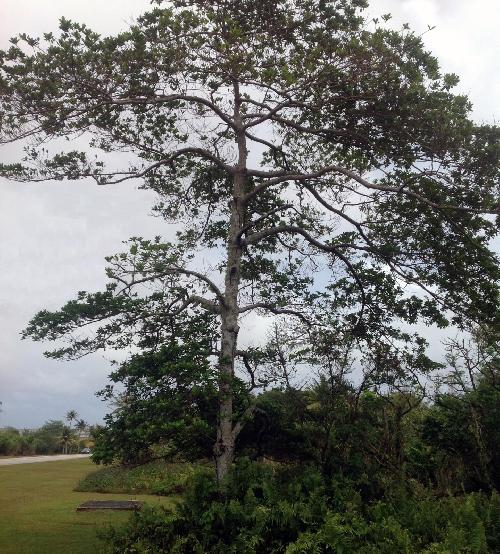Some ecological relationships among plants are robust and independent of geography. Expanding the validation of these relationships requires data from under-represented geographic regions and plant groups. Recent research on the Elaeocarpus joga tree from the island of Guam addressed these concerns, and the results appeared in the November 2015 issue of the journal HortScience.
Nutrient relations of native tree species from Guam and nearby islands have not been adequately studied to date, and the lack of research has caused this part of Oceania to be under-represented in several global research agendas. Ecologist Thomas Marler from the Western Pacific Tropical Research Center at the University of Guam partnered with conservationist John Lawrence from the United States Department of Agriculture Natural Resources Conservation Service to address this void.
Identifying nutrient limitations to plant growth is required for developing a full understanding of forest ecosystem production and nutrient cycling dynamics. The partners employed a combination of protocols including additions of nitrogen, phosphorus, or potassium to stimulate growth and comparisons of leaf nutrient levels with soil nutrient levels. Results pointed to nitrogen and potassium as limiting factors in Guam's limestone soils for this attractive native tree.
 This is a ten-year-old Elaeocarpus joga street tree propagated and planted by researchers John Lawrence and Thomas Marler on the island of Guam. The rare tree species was the subject of recent research by the scientists. Credit: Thomas E. Marler
This is a ten-year-old Elaeocarpus joga street tree propagated and planted by researchers John Lawrence and Thomas Marler on the island of Guam. The rare tree species was the subject of recent research by the scientists. Credit: Thomas E. Marler
"Increased efforts toward conservation of large charismatic trees are limited by lack of local data," said Lawrence. "Even base-line information such as which macronutrients most limit growth of forest species in Guam's limestone soils is lacking. Understanding soil health is critical to inform actions that support sustained restoration of degraded landscapes to improve island ecosystem health."
The results also have the potential to add crucial data to the global database on leaf economic spectrum. This spectrum is comprised of various patterns of correlations among leaf traits. On one end of the spectrum are short-lived leaves that are relatively inexpensive to construct. These leaves are able to pay back their construction costs fairly rapidly. On the other end of the spectrum are long-lived leaves that are expensive to construct and maintain. The return on investment is longer for species that construct leaves with these traits. Data generated from case studies from western Pacific island nations are lacking from the global database.
One value of the leaf economic spectrum is that it explains most of the variation in ecological strategy among the thousands of species that have been studied. Therefore, one can obtain a small data set that characterizes the most important leaf traits of an under-studied species and make strong predictions about the ecological strategy of the species.
"We are hoping that this initial look at one important tree species will set the stage for more studies on other rare tree species in the western Pacific island nations," said Marler.
source: University of Guam